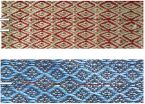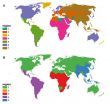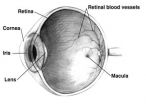NASA tracks intensifying Typhoon Hagupit
2014-12-03
(Press-News.org) Typhoon Hagupit continues to intensify as it continued moving through Micronesia on Dec. 3 triggering warnings. NASA's Aqua satellite passed overhead and captured an image of the strengthening storm while the Rapidscat instrument aboard the International Space Station provided information about the storm's winds.
The International Space Station-RapidScat instrument monitors ocean winds to provide essential measurements used in weather predictions, including hurricanes. "RapidScat measures wind speed and direction over the ocean surface and captured an image of Hagupit when it was a tropical storm on Dec 2 at 8:50 a.m. GMT," said Doug Tyler of NASA's Jet Propulsion Laboratory, Pasadena, California. "The growing storm, north of New Guinea and headed for the Philippines, already had 25 meters/second winds (50 knots/57.5 mph/92.6 kph)."
A typhoon and tropical storm warning are in effect in Micronesia, in addition to a typhoon watch as Hagupit marches through Micronesia on a west-northwesterly track. A typhoon warning is in effect for Yap and Ngulu in Yap state, and a typhoon watch and tropical storm warning is in effect for Kayangel in the Republic of Palau. In addition, a tropical storm warning is in effect for Koror in the Republic of Palau.
NASA's Aqua satellite captured a visible image of Typhoon Hagupit on Dec. 3 at 04:30 UTC (Dec. 2 at 11:30 p.m. EST) as it moved through Micronesia in the western Pacific Ocean. The image showed a concentration of strong thunderstorms around the center with bands of thunderstorms spiraling into it.
At 1500 UTC (10 a.m. EST) on Dec. 3, Typhoon Hagupit's maximum sustained winds had increased to 100 knots 115.1 mph/185.2 kph). Typhoon-strength winds extend 30 nautical miles (34.5 miles/55.5 km) out from the center, while tropical storm force winds extend up to 120 nautical miles (138 miles/222 km).
The typhoon was centered near 8.7 north longitude and 138.3 east latitude, just 91 nautical miles (104.7 miles/168.5 km) west-southwest of the island of Yap. The typhoon is kicking up very rough seas with wave heights to 34 feet (10.3 meters). It was moving to the west-northwest at 18 knots (20.7 mph/33.4 kph) and is expected to continue in that general direction.
Forecasters at the Joint Typhoon Warning Center (JTWC) expect that Hagupit will continue to move west-northwest through Micronesia while intensifying to a Category four typhoon on the Saffir-Simpson scale peaking at 130 knots (149.6 mph/240 kph) over the next two days before it starts to weaken. The JTWC forecast calls for the typhoon to turn to the northwest and stay to the east of the Philippines.
INFORMATION:
For more information about Rapidscat, visit: http://www.jpl.nasa.gov/missions/iss-rapidscat/
Rob Gutro
NASA's Goddard Space Flight Center
ELSE PRESS RELEASES FROM THIS DATE:
2014-12-03
This news release is available in French.
Quebec City, December 3, 2014--Researchers at Université Laval's Faculty of Science and Engineering and Centre for Optics, Photonics and Lasers have developed smart textiles able to monitor and transmit wearers' biomedical information via wireless or cellular networks. This technological breakthrough, described in a recent article in the scientific journal Sensors, clears a path for a host of new developments for people suffering from chronic diseases, elderly people living alone, and even firemen and police officers.
A ...
2014-12-03
Researchers at North Carolina State University have for the first time mapped human disease-causing pathogens, dividing the world into a number of regions where similar diseases occur.
The findings show that the world can be separated into seven regions for vectored human diseases - diseases that are spread by pests, like mosquito-borne malaria - and five regions for non-vectored diseases, like cholera.
Interestingly, not all of the regions are contiguous. The British Isles and many of its former colonies, such as the United States and Australia, have similar diseases ...
2014-12-03
Good news on the panda front: Turns out they're not quite as delicate - and picky - as thought.
Up until now, information gleaned from 30 years worth of scientific literature suggested that pandas were inflexible about habitat. Those conclusions morphed into conventional wisdom and thus have guided policy in China. But a Michigan State University (MSU) research associate has led a deep dive into aggregate data and emerged with evidence that the endangered animal is more resilient and flexible than previously believed.
Vanessa Hull is a postdoctoral research associate ...
2014-12-03
Irvine, Calif., Dec. 3, 2014 - High fecal counts frequently detected at so-called "baby beaches" may not be diaper-related. UC Irvine researchers found that during summer months, small drainpipes emptying into enclosed ocean bays have a disproportionate impact on calmer waters. The findings were published Tuesday in the journal Environmental Science & Technology.
Researchers have long known that creeks and tributaries foul coastal waters with major winter storm runoff. But dry seasons like the one that just concluded can spell potential peril, too. Runoff from watering ...
2014-12-03
When it comes to getting out of a tricky situation, we humans have an evolutionary edge over other primates. Take, as a dramatic example, the Apollo 13 voyage in which engineers, against all odds, improvised a chemical filter on a lunar module to prevent carbon dioxide buildup from killing the crew.
UC Berkeley scientists have found mounting brain evidence that helps explain how humans have excelled at "relational reasoning," a cognitive skill in which we discern patterns and relationships to make sense of seemingly unrelated information, such as solving problems in unfamiliar ...
2014-12-03
Scientists have developed a new light-sensitive film that could one day form the basis of a prosthetic retina to help people suffering from retinal damage or degeneration. Hebrew University of Jerusalem researchers collaborated with colleagues from Tel Aviv University and Newcastle University in the research, which was published in the journal Nano Letters.
The retina is a thin layer of tissue at the inner surface of the eye. Composed of light-sensitive nerve cells, it converts images to electrical impulses and sends them to the brain. Damage to the retina from macular ...
2014-12-03
A new research brief from the US2010 Project probes the status of minorities in American suburbs. Suburbs in 2010 were as racially and ethnically diverse as were central cities in 1980, and that diversity is still increasing. Yet minorities are not finding equal access to the American dream in the suburbs where they live, a lesson illustrated recently by Ferguson, MO.
Suburbia has always been less segregated than central cities. Segregation is slowly declining between suburban blacks and whites, but has stayed about the same for Hispanics and Asians over three decades. ...
2014-12-03
Do you consider yourself a conscientious person? Then sign up for a fixed-rate mortgage. Neurotic? You'll probably opt for home ownership over renting.
According to a new study published in the Journal of Behavioral and Experimental Economics, personality traits are strong indicators of real-estate decisions. The research, by Dr. Danny Ben-Shahar of Tel Aviv University's Faculty of Management and doctoral candidate Roni Golan of the Technion Institute of Technology, finds a correlation between personality and individual real estate choices, and a follow-up study by the ...
2014-12-03
Those wishing to prove themselves as "doers" must not only be hands-on and demonstrate proactive behavior but also have social acumen and a feel for favorable opportunities. Those who rely on personal initiative alone will quickly be standing there as an isolated troublemaker. This is what psychologists from the University of Bonn and their colleagues from Florida State University (USA) have discovered through surveying a variety of occupational categories. The results have been published online in the renowned "Journal of Management". The printed version will be published ...
2014-12-03
Learning from others and innovation have undoubtedly helped advance civilization. But these behaviours can carry costs as well as benefits. And a new study by an international team of evolutionary biologists sheds light on how one particular cost - increased exposure to parasites - may affect cultural evolution in non-human primates.
The results, published Dec. 3, 2014, in the journal Proceedings of the Royal Society B, suggest that species with members that learn from others suffer from a wider variety of socially transmitted parasites, while innovative, exploratory ...
LAST 30 PRESS RELEASES:
[Press-News.org] NASA tracks intensifying Typhoon Hagupit



